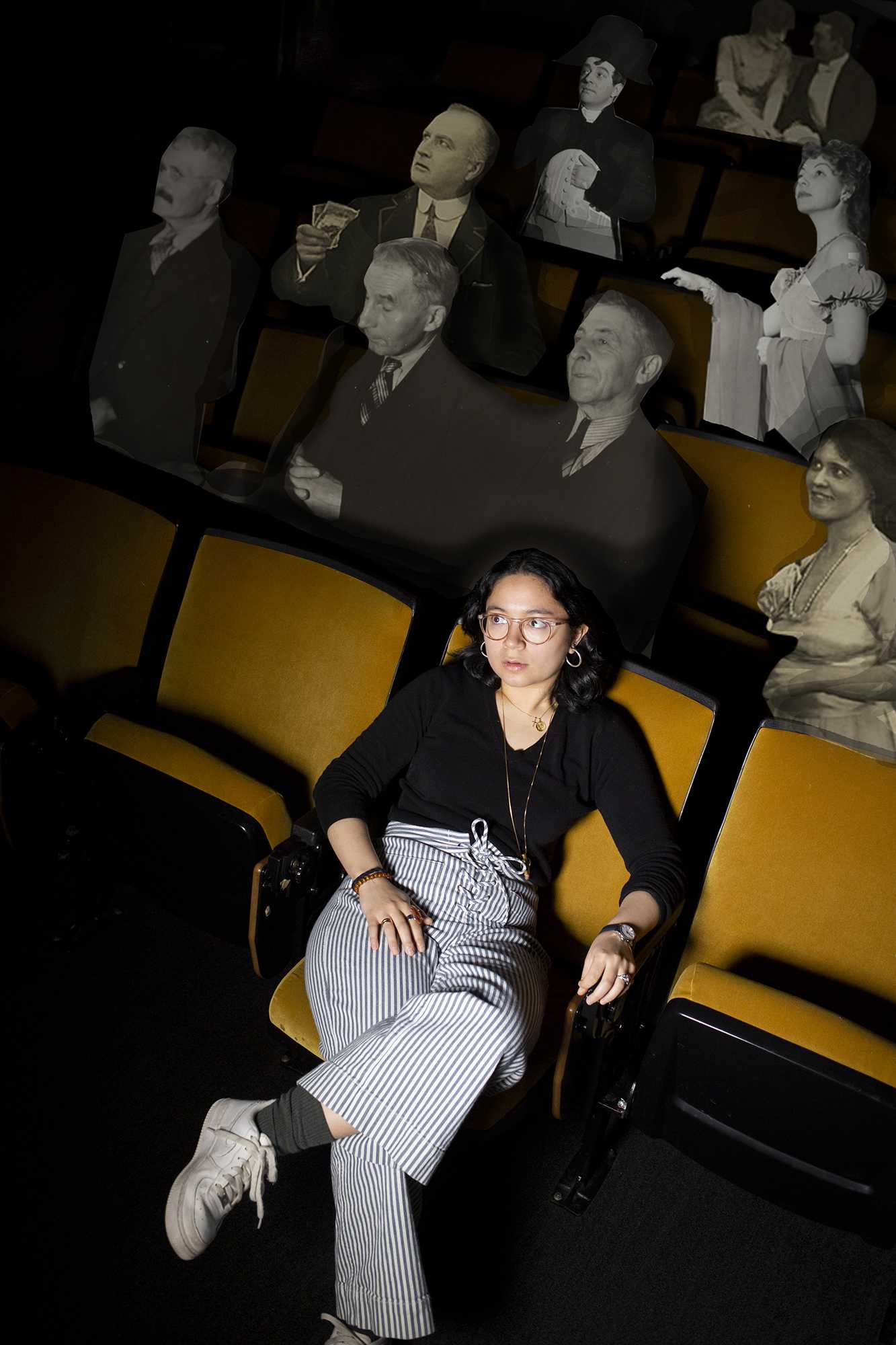
Everyday Realities in a Cinematic Dream
By Fareid El Gafy, Staff Writer
 woman in a tie-dye shirt and dark glasses leans against a low stone wall in an Austin parking lot. She shuffles a deck of cards. “They’re Oblique Strategies,” she informs a cowboy type as he approaches. “No two cards are alike.” Spread out behind them is a boombox and an artistic model of the menstrual cycle represented with bowls in various shades of red. The Texan takes a card and reads, “It’s about building a wall but making a brick.”
woman in a tie-dye shirt and dark glasses leans against a low stone wall in an Austin parking lot. She shuffles a deck of cards. “They’re Oblique Strategies,” she informs a cowboy type as he approaches. “No two cards are alike.” Spread out behind them is a boombox and an artistic model of the menstrual cycle represented with bowls in various shades of red. The Texan takes a card and reads, “It’s about building a wall but making a brick.”
Since the late ’80s, Richard Linklater has sought to capture the spirit of an oblique strategy, or a challenging game intended to break creative blocks, in film. Linklater’s characters are outcasts — he shines a spotlight on them and occupies the viewer with their daily lives, whether through a scene of a hippie in a parking lot with a deck of cards or a washed-up musician teaching at an elementary school and inspiring the kids to enter a Battle of the Bands competition. From the periphery, they offer a window into the American Dream.
Linklater’s audience relishes his fascination with the misfits. They find his outside-looking-in stories relatable. In his early work, even the structure of each film breaks the mold. The filmmaker abandons a traditionally cinematic narrative formula. There are no great heroes or villains, no great journeys, no great developments in the classic Linklater. Instead, he reveres the everyday reality, the United States that we all live in. Alfred Hitchcock once mused that film is “life with all the boring bits cut out.” But it’s in the quotidian that Linklater thrives.
“He wants to put the boring bits back in,” Tisch Experimental Animation Professor Jeff Scher said.
To accomplish the static, ordinary realism of his early films, Linklater used an ensemble cast, allowing him to explore multiple stories and themes instead of restricting himself to a singular point-of-view. The filmmaker is freed. He sees no requirement to have a character develop through to the end or offer a concrete suggestion of where to go next. Paired with a loose narrative structure, he affords himself a fluidity that breathes life into the setting, itself a character in the feature.
Linklater’s first cult hit, “Slacker,” meanders its way through a day in Austin. A Texas native himself, Linklater also stars in the 1990 film as a character known simply as “Should Have Stayed at the Bus Station,” while the supporting characters are played by a host of other Texans. It’s a breathing portrait of a major U.S. city, and one that embodies Linklater’s own experience.
As the film opens, Linklater’s character expounds on dreams from the back of a taxi. “Every dream you have becomes its own reality,” he rambles. A girl in a wide-brimmed baseball cap intrudes upon a conversation between old friends. “I’ve got something that will blow your minds,” she grins as she dips into her jean pocket. “It’s a Madonna pap smear.” The film embodies the spontaneity of his youth and the era of the late-20th-century United States that he felt was thriving.
Linklater makes space for the strange in his America, especially in the Bohemian haven of Austin. An ordinary laborer reveals that he refuses to take a job, and announces to his fellow workers that “every single commodity you produce is a piece of your own death.” He’s an odd brand of Marxist, but he belongs in the world of “Slacker.” Austin is the star of the film, and the players make it up as they reflect on our society at large.
Linklater moved away to study film at Austin Community College and remains in the city to this day. The city has an old, rich art scene, and it’s exactly that culture Linklater taps into. His preoccupation with the American Dream as a reflection of himself confuses Hassan Elgamal, a CAS junior studying Metropolitan Studies.
“It feels like all his movies are about himself […] I don’t know how many movies I could make about myself,” Elgamal said.
For “Dazed and Confused,” Linklater brought together soon-to-be household names Matthew McConaughey and Ben Affleck. The 1993 film depicts the drama of Austin high schoolers maneuvering hazing rituals in 1976. Texas as a microcosm of the United States is on display. The Lone Star State is massive, bursting with self-identity, home to progressive liberals and far-right conservatives alike. It’s a classic high school drama riddled with the oddity of “Slacker.” It’s set in the liberating, revolutionary post-Vietnam United States, where McConaughey’s character drives around town with high schoolers, though he graduated a few years prior. The kids do drugs, they drink, they fight, they navigate love and they take refuge in rock ‘n’ roll, sacred to the rebellious youth of Linklater’s age.
In his most recent work, Linklater depicts coming-of-age. “Boyhood” tracks the life of a boy as he grows up in Austin, filmed over the course of 12 years and released in 2014. Mason (Ellar Coltrane) endures an abusive stepfather, economic hardship, constant relocation and social difficulty due to the recklessness of the adults around him. During the course of filming “Boyhood” and as Linklater approached middle age, the Great Recession of 2008 placed many Americans in dire straits. The American Dream became less attainable than in Linklater’s youth.
Mason’s journey toward maturity bestows a sense of clarity, an ability to see through the facades we buy into as children. Yet again, Linklater finds a metaphor to play against American culture, another lens through which to view our society. The United States changes as Mason grows, and he comes to understand the world around him better. The passage of time, much like the loose narratives and ensemble casts of Linklater’s earlier films, gives character to the setting. Mason goes off to college and finally becomes independent. In many ways he’s a product of the U.S. he grew up in. He didn’t choose it, but it shapes him — just as the ’70s and ’80s shaped Richard Linklater.
Email Fareid El Gafy at [email protected]. A version of this article appears in the Thursday, April 4, 2019, print edition on Page 7. Read more from Washington Square News’ “Arts Issue Spring 2019.”


























































































































































